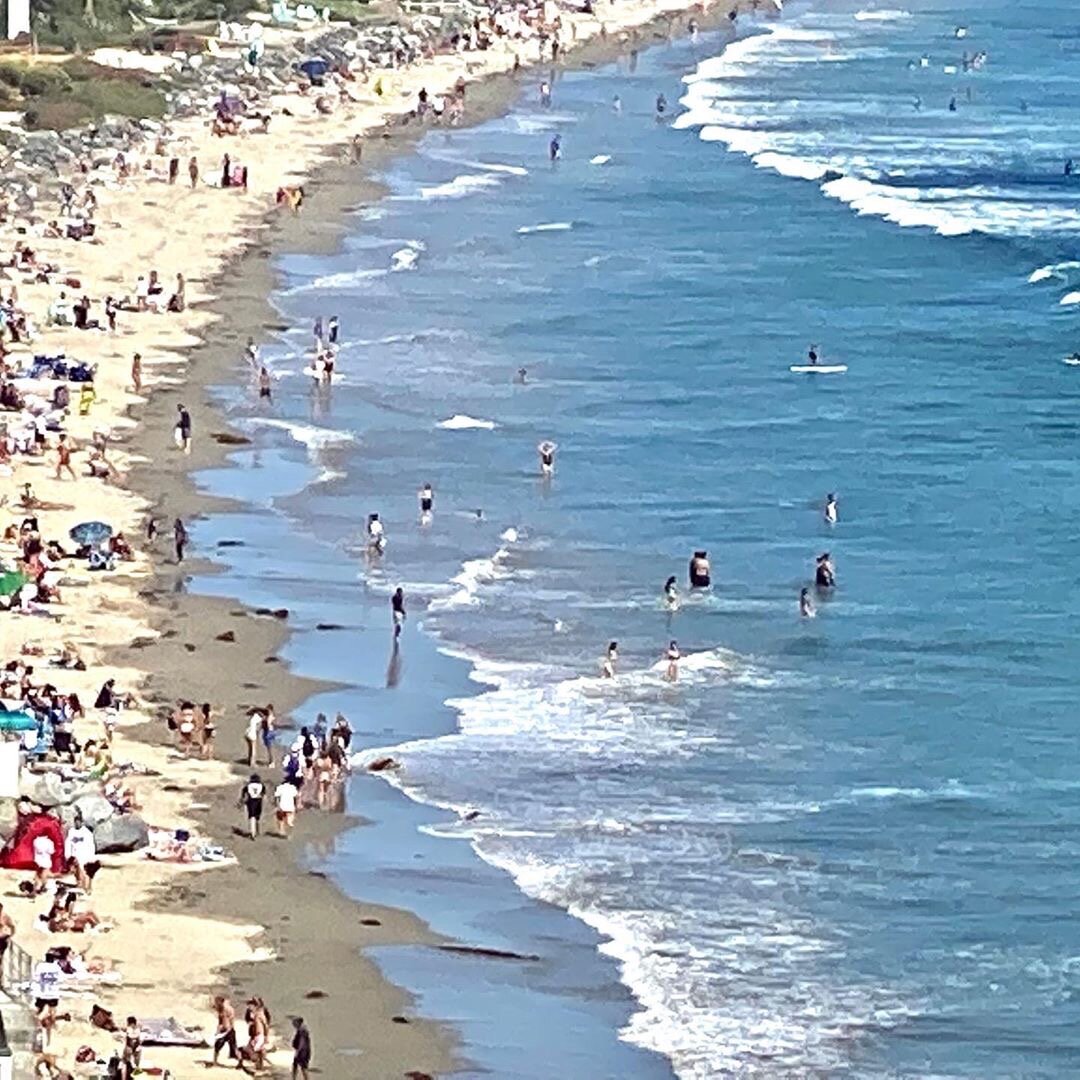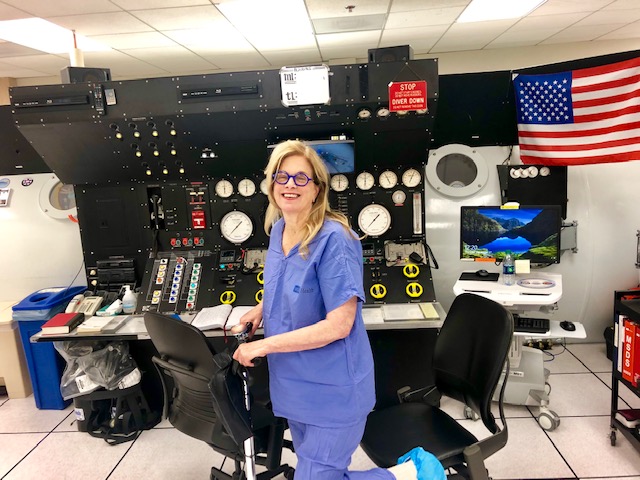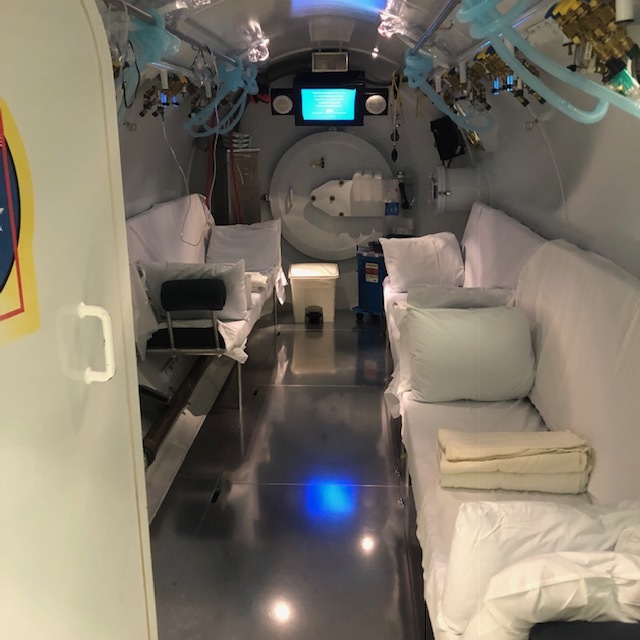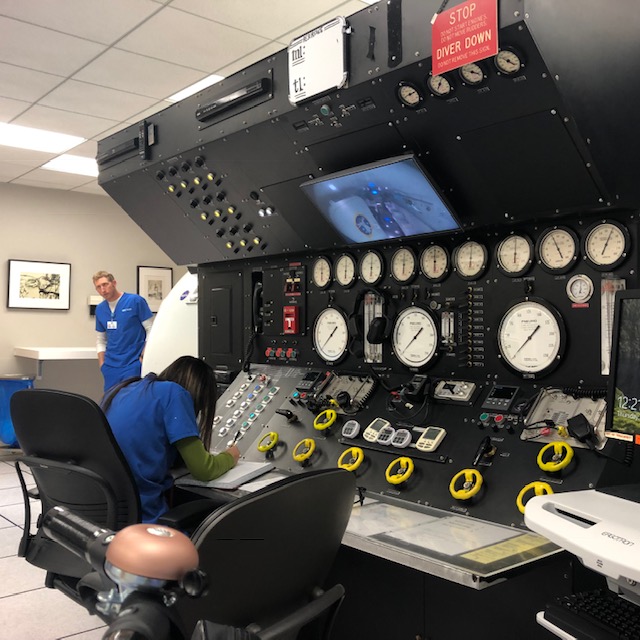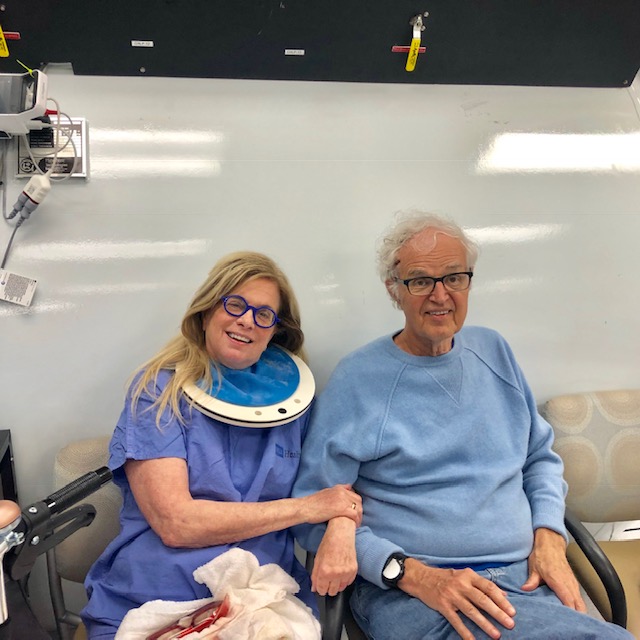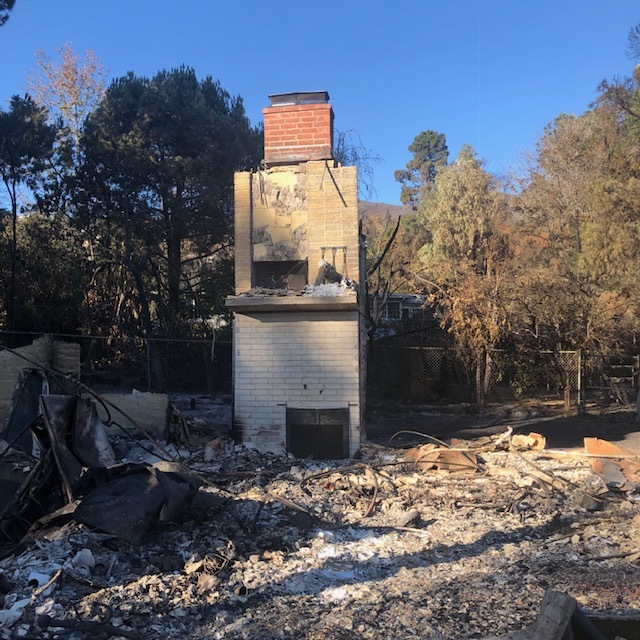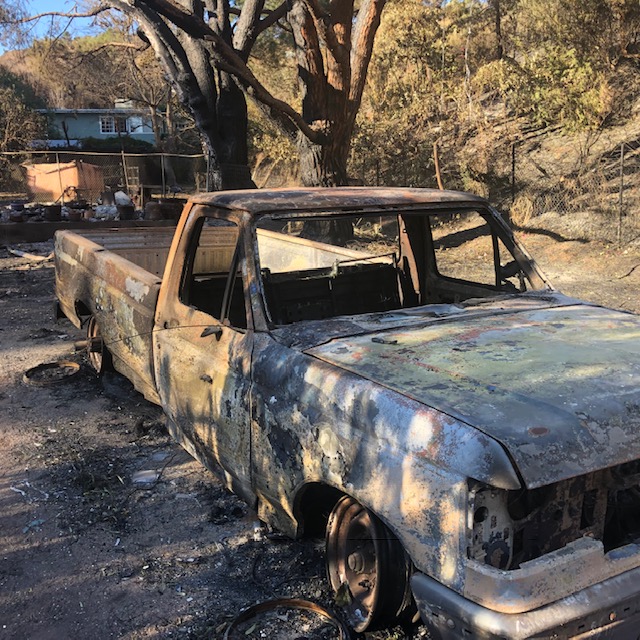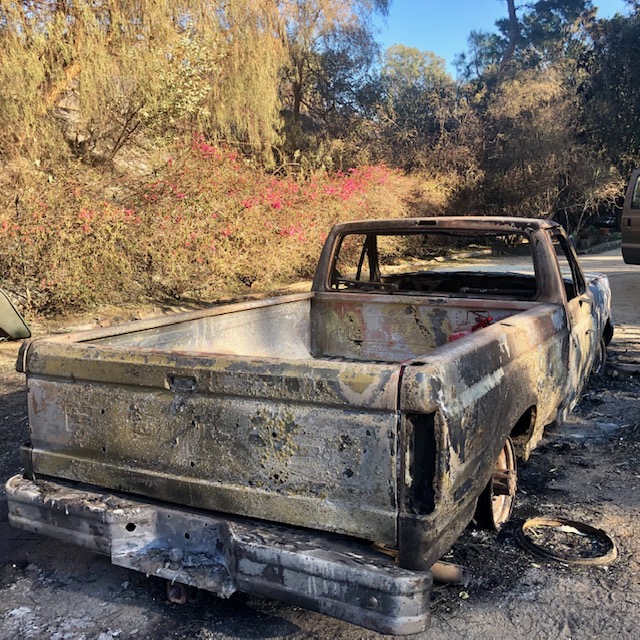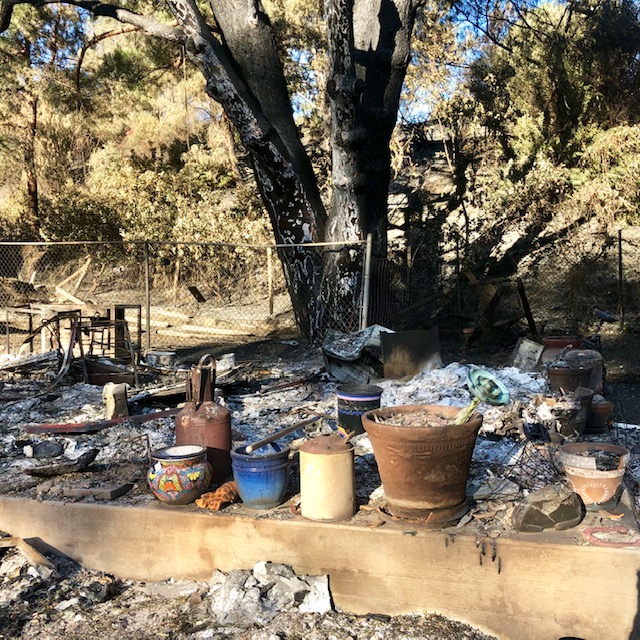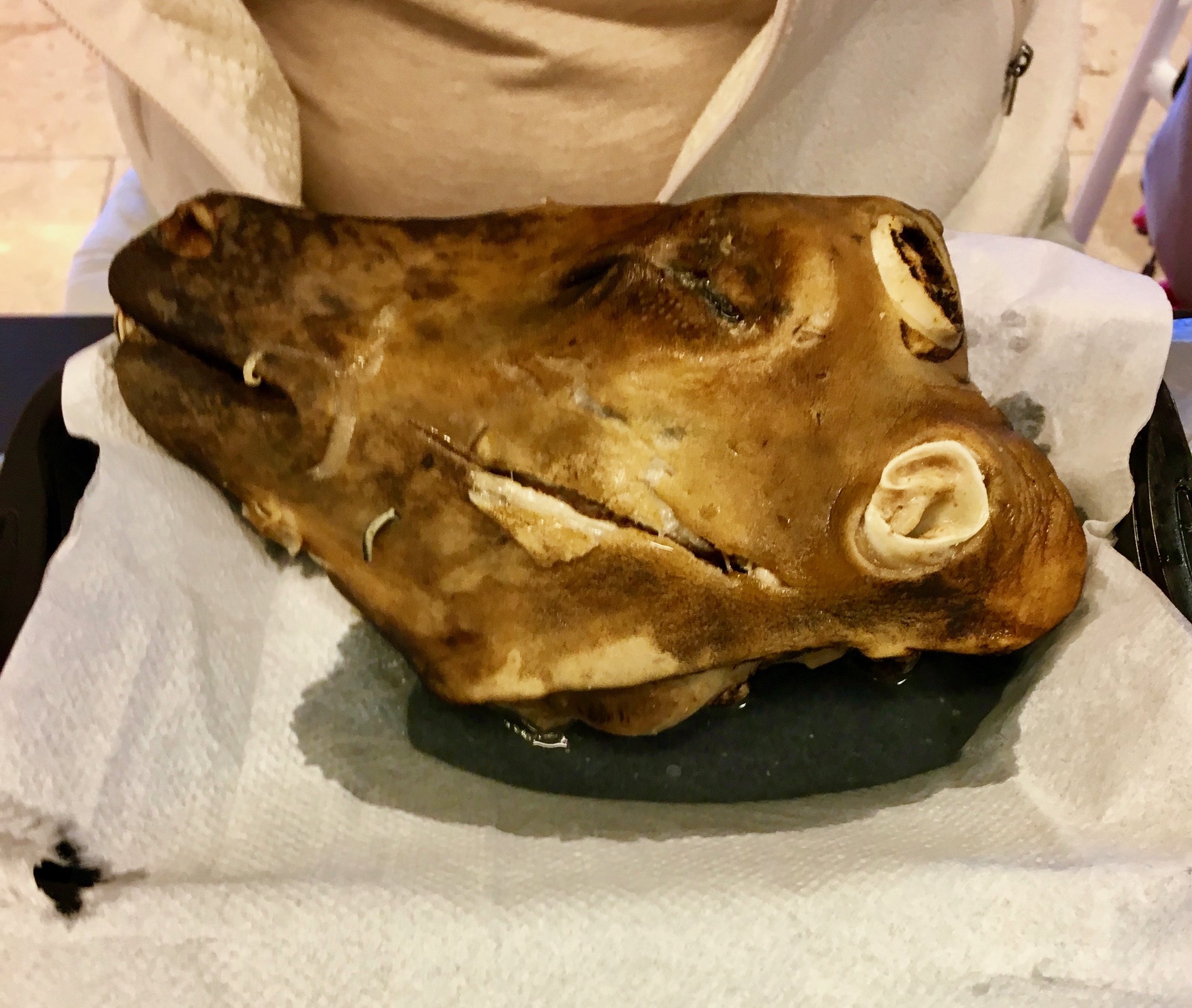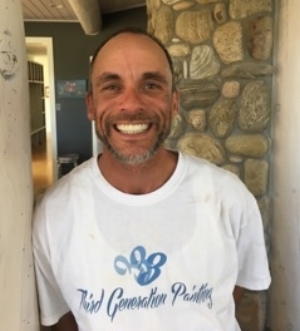Things I miss most (during the pandemic)
Luckily, my essentials are covered--housing, food, transportation--but I'm realizing there are things I'm missing during the Virus--some tiny, some not so tiny. And now thanks to Governor Newsom's latest shutdown I'm probably going to continue to miss them.
For years an especially thoughtful neighbor has picked up our morning papers from where they're tossed in front of the garage and carefully placed them by our front door. Back in March, I asked Andy (Stern) if he was okay. I was worried because our papers were still lingering out by the garage. Andy said that because of the Virus he didn't want to touch them. I understand. But I miss Andy every morning.
I miss going out to lunch with friends and the fun of returning home and reuniting with my husband with fresh stories from the outside world. Things I did and heard and saw while we were apart. Now we're never apart.
After 8 operations in the past year-and a-half, I miss training with my physical therapist in person. On Zoom it's impossible to know if what I'm feeling is normal "pinching" or something more serious.
I miss the spontaneity of our jumping in the car and heading up to Jeannine's in Montecito for breakfast. And then poking around Wendy Foster's to look at their dreamy clothes.
When friends invite us for a meal, I miss the easy acceptance of saying, Yes!
I miss my Scrabble Club. An informal group of Scrabblers who met on Friday afternoons at my house to play and drink wine. Or, as Pamela Eilerson put it, probably in a better order--to chat, drink wine, and also play Scrabble.
I miss my brother not being to fly in and stay a few nights without our scrutinizing where he's been, who he's seen, and is he really, truly Covid-free. Cross your heart and hope to die.
Because of my husband I miss all the sporty events he's longing for. For his sake I hope the NBA does take place in Disneyland, an appropriate place where dreams come true.
When I was hospitalized at St John's for 7 days, I missed more than I can say having my husband with me. The previous year when I'd been hospitalized he'd had a sweet twin bed in my room. This year he had to drop me off curbside, and I was all alone. It was beyond awful.
I miss that I didn't get the full, in-person, 3-part tutorial on how to use all the spiffy thing-a-ma-jigs on my new car.
I miss that the gorgeous Olympic swimming pool at Pepperdine is closed so my husband can't do his 70 laps twice a week. I miss our family, especially when a granddaughter is in the hospital and we can't visit.
Of course, I miss hugging and kissing.
I miss our neighborhood Dinner Club. I miss Roya's Persian rice with crispy tahdig and beautiful zereshk, Alan's freshly made, hot-from-the-oven bread, Karen's home-made butter, Noelle's roasted chicken, and Catherine's to-die-for, world-class, professionally beautiful desserts.
I miss when people are wearing masks that I can't see their facial expressions. I miss hiking and fishing in Montana. I miss the escapism of travel--domestic and international. I miss that Vs, one of our favorite Malibu restaurants, has no outdoor dining. I miss our old life in Malibu.
What do you miss?
Jo Giese is the author of several books, including Never Sit If You Can Dance, and was co-founder and president of the MalibuGreenMachine.
The Swing!
We have a swing inside our house.
It hangs like an open invitation, beckoning friends to swing toward the kitchen or soar all the way up into the rafters in the living room.
During the recent rebuild of our place in Montana, I asked Tom, the contractor, to put in a swing. “That’s the perfect spot for it,” I said, pointing to the lodge pole pine log that runs across the ceiling, separating the dining room from the living room. Tom indulged me by jerry-rigging a seat made from a scrap of framing fir, and hanging it with some ratty rope that happened to be laying around the job site.
Joe, one of the carpenters, scowled, “You’re not going to keep that there?” The implication was that we should put it outside in the yard where it belongs.
“It’s permanent, “ I said. “I loveit!” I was giddy with the excitement of having an indoor swing for the first time, and I couldn’t help grinning as I pumped harder and higher, demonstrating how I could sail up and out into the living room. “It makes me feel like a kid again. You should try it!” I called down to him.
Tom revised the makeshift set-up with a shiny new red rope and a handsome thick oak seat. The first guest to give it a try was my husband’s son from Connecticut, who’d come out to Montana to go fly-fishing with his dad.
Wil flew up and up, touching his toes to the ceiling in the dining room, while his bemused teenage son photographed him, probably enjoying the spectacle of this unusual, and maybe to him, unfatherly, activity. Pumping even harder, Wil left a toeprint on the ceiling. Perfect. I suggested he autograph it. A competitive goal for others to match.
The next day Tom was alarmed when he noticed how much the rope had stretched. “Jeez,’ he said, “I thought you were going to glide gently back and forth.”
He yanked out the rope with the slack in the line and said the swing was off limits for now.He strengthened it with a 3/8” galvanized steel chain that was powder-coated in the glossiest, prettiest red paint.The new industrial strength chain was attached to the overhead log with brackets and lag bolts.Now it was sturdy enough for whatever our athletes dished out.
“Why a swing?” more than one person has asked.
“Why not?” I don’t understand why everyone with a high ceiling doesn’t have one. It costs next to nothing—a rope or maybe a chain, a wooden slat, some bolts. It’s real simple, and anyone any age, any fitness level can do it. And no matter what sorrow or sadness you might be experiencing, it can’t cling to you when you’re swinging.
If I’m passing through the dining room and I’m not in a rush, sometimes I might idly sit on the seat and start pumping for the sheer pleasure of it. When I gain altitude, with my hair blowing freely in the whoosingbreeze, it’s the closest I get to flying. Floating free in the air, I’m transported to another place. The swing is my happy place. As I’ve said to Ed, When I’m on our swing, I don’t need a therapist.
As a kid, we had a small swing set in our backyard in Seattle.It had two little seats--one for my brother, one for me—and none of the razzmatazz of today’s fancy swing sets with slides and ladders and forts.A large kitchen window overlooked the backyard, so our mother could be inside and still keep her eye on us.
Seward Park was within walking distance from our house, and back before helicopter-parenting, little 5-year-old me, a free range child before the term existed, would wander by myself over to the public swing sets. Sometimes a parent who was there with a child would give me an extra push, too. My little world looked different from way up there—Lake Washington, the boat basin, the picnic areas. I was a lonely child but I never felt lonely when I soared through the air on a swing.
At a recent reunion of my husband’s family the swing was never not in use.Our oldest granddaughter, who is otherwise reserved, would swing standing up, while her younger brother preferred side-saddle. The only danger was if someone walked by and wasn’t paying attention and got hit but that’s never happened because there’s usually people around to yell, “Hey, watch out!”
One grandson, who likes to hula hoop, can hula hoop while Ed throws him a ball and they play catch back and forth. I wonder if they could do this trick while he’s gliding on the swing? Another grandson gets as high as he can and in mid-flight jumps off and lands on a ottoman, which he’s positioned just so beneath him. The old ottoman with wheels skids across the wooden floor until it crashes into the ledge next to the picture window. This reminds me of when our youngest grandson used to enjoy climbing up our bannister. Still in diapers, once he looked down from the height of the second floor, and called out to me, “No responsible adult would let me do this.”
A favorite memory is of our youngest grand-daughter happily gliding all the way up to the rafters, while none, not one, of the five family members on the couch in front of her, were paying any attention to her extraordinary high-flying feat, except for me who was photographing the little daredevil.
During the reunion the swing was in such constant use by twelve people for five days that as Ed’s family was packing up to leave I was horrified when I noticed that one of the lag bolts had unscrewed from the overhead log. Both bolts were replaced with bigger, sturdier hardware.
I enjoy watching people’s reactions. To some the swing seems as foreign as if we’ve brought a bison indoors. And I admit I’m a little suspicious of anyone who doesn’t enjoy it—unless they have a physical excuse like vertigo. Brad, my hiking partner, is a extreme athlete, who almost lost his leg while skiing off-trail and ended up in a avalanche, and who thinks nothing of bike riding 100 miles a day. Yet he approached the swing timidly, and never really let himself go and enjoy it.
Sometimes when I get high enough I pause and glide like a bird on a thermal, and I can’t stop smiling. This is what contentment feels like. Because think of it, have you ever seen a grumpy, frowning person on a swing? Hey, maybe what our country needs now are more swings to improve the national mood.
Jo Giese is a award-winning radio journalist, author, teacher, community activist. Her book Never Sit If You Can Dance: Lessons from My Mother is available on Amazon, iTunes, and Audible. Jogiese.com
Never Leave A Compliment Unsaid
I try to never let a compliment go unsaid. If I ever thinksomething positive about someone or something, I share it before it vanishes.
Take the time I was placing an order with a florist. The woman I was speaking with seemed thrilled I’d called. And mine wasn’t some big order that would save the day—just a little arrangement for a friend’s birthday. It turned out I was speaking with the owner. Before I hung up, I told her she had the best phone personality.
“You just made my week,” she said.
Her week? That a simple comment made by a total stranger had struck such a chord made me wonder what difficulties she was going through. Because most of the time, we don’t have a clue about the struggles other people are up against, and yet a social nicety, a mini-compliment out of the blue—though it must be an authentic one; it can’t be something phony, trumped up for social lubrication—has the power to touch people profoundly.
Once, I was at a store, and as the clerk was ringing up a sale, I glanced at the woman standing next to me. I complimented her on her yellow sundress, how cheerful and summery it was.
“Thank you so much for saying that,” she said, barely holding back tears. “You don’t know how much that means to me. I just came from a funeral, and everyone was wearing black. People told me I was being disrespectful. But I thought the deceased—a friend in his eighties—would appreciate something cheerful.”
I’d just reacted to the festive color of someone’s dress, and I had no idea I was giving a gift to someone who needed it so badly. She took my comment as an affirmation—regardless of what her girlfriends had said, she wasn’t a bad person for having worn a sunny color to a funeral. She was okay. And isn’t that what we all crave? To feel that we’re okay?
After that brief encounter, I walked away with an extra bounce in my step, and probably she did, too. Giving a compliment releases energy and relaxes the spirit. Besides, it’s fun. This simple kindness adds an extra punctuation mark, a spark!, and life feels momentarily fuller. And giving a compliment is such an easy, fluent currency available to all of us.
Jo Giese is a award-wining radio journalist, author, teacher, community activist. Her book Never Sit If You Can Dance: Lessons from My Mother, is available now. jogiese.com
On the Road with Never Sit If You Can Dance
The official launch of my mother-daughter memoir Never Sit If You Can Dance: Lessons from My Motherisn’t until April 23rd. But because of early invitations to literary festivals my joyful book is already inching its way out into the public.
My mom was called Babe, and my first impression of being out in the world with Babe is that my mother stories are acting as an immediate catalyst, unleashing mother stories in the audience and in book buyers. Organizers are always advising authors to make our presentations interactive, to engage the audience, not to just read from our book.
But I don’t have to do anything especially interactive because I’ve found that after I speak people can’t wait to tell me their stories. Although I’m still impacted by the emotional stories I’m telling—recently when I was recording the audiobook, I couldn’t stop crying--I wasn’t expecting my stories to unleash such a flood, such a outpouring of mother stories from the audience.
At the CALM Celebrity Authors’ Luncheon in Santa Barbara after I spoke about my mom’s dancing, one woman rushed up to tell me that her mom took up tap-dancing in her mid-eighties.
At the Literary Guild of Orange County’s annual event I mentioned how surprised I was that one of my favorites is Lesson 13: Sometimes Life Begins Again at 95. Because Babe blossomed at 95 when she moved into a senior living community, and I wasn’t expecting that. Later when I was at the book table, autographing books, a woman came up to me, and looking me straight in the eye, said, “I’m ninety-five.” This tall brunette looked healthy and happy, and I took her comment to mean that she was blossoming at 95, too. In our culture that’s something we’re not necessarily led to believe is a possibility.
I’m enjoying the interactions with other authors, too. In Santa Barbara I was in the book signing ballroom, and the mother of the youngest author, a eighth-grader, gave me a compliment on my red satin blazer—a cool splurge for the book tour—and I thanked her and told her about Lesson 10: Don’t Be Drab. I also mentioned that since authors are the entertainment, we should dress accordingly. This mother then turned to her daughter, the author, who was wearing a plain blue and white dress, and said, “See, did you hear that?”
A friend, who knew my mother, and had just read the book, suggested I give out vintage handkerchiefs when people bought a book. So, I ordered 108 vintage hankies on Amazon. When I asked a book buyer if they’d like a handkerchief to go along with their book—they were fanned out on the table in a rainbow of colors--it also unleashed such stories of nostalgia for their moms and their mom’s handkerchiefs.
My next out of town gig is the Annapolis Book Festival, and I’m looking forward to the stories and the interactions with people who attend. If you’re near Annapolis and the Key School on April 6, stop by and introduce yourself and share your stories.
Jo Giese is an award-winning radio journalist, author, teacher, and former TV reporter. jo@jogiese.com
Facebook:
https://www.facebook.com/authorjogiese/
Twitter:
https://www.twitter.com/jogiese7
Instagram:
https://www.instagram.com/giesejo
She Writes Press Twitter:
https://twitter.com/shewritespress
She Writes Press Facebook:
https://www.facebook.com/shewritespress/
Now That’s Romantic!
When Bond, my husband’s piano teacher, learned that I’d torn my Achilles tendon and after the reattachment surgery I’d be house-bound, lying in bed, he texted me: That’s romantic!
Romantic? I scoffed at the idea. My left leg from toes to knee was encased in a stiff cast and elevated on pillows. I could not walk, or shower, or drive. I got around, such as I did, on a knee scooter that Ed, my husband, got me because crutches hurt my underarms too much. Believe me, sex and romance were not the first thing on my mind.
When the sutures were removed, instead of starting PT and walking like I’d expected, I got the awful news that the wound hadn’t healed, but had died, the skin was black and necrotic. That’s when I started visits to a wound doctor. Ed drove me from our place way out in Malibu all the way to Cedars Medical Center near West Hollywood, and then to the hyperbaric oxygen wound chamber at UCLA. Think Ed, from Kentucky and Washington, DC, still new to LA, driving daily in terrible, scary, crazy LA traffic with me in the back seat, left leg extended, the scooter in the trunk. That is notromantic.
About 40 days into our medical nightmare, and I say ‘our’ nightmare because when you’re married and experiencing something this serious, you go through it together as a team, a friend asked me how my ordeal was impacting my relationship, my marriage. By this point I’d had two surgeries, I was still not walking, and there was still no positive end in sight.
I surprised myself by saying that tending to me was bringing out a side of Ed I’d never experienced. Ed and I had married 10 years ago, and before that he’d been a hot shot litigator with Kirkland & Ellis, one of snazziest legal firms. He’d argued cases at the Supreme Court. He was whip smart and super competent. But now when I couldn’t walk and was forced to call on him all day and all night long, even if I needed a stupid piece of tissue, “Ed, could you do me a favor…” he was softer, more relaxed, more gentle, downright tender. It wasn’t that he wasn’t like this before, but he became more so.
That’s not all. Both Ed and I are impatient people. It’s not our best quality. Okay, so it’s a bad quality we share. But during my medical nightmare after I had the awful wound vac removed, and we’re waiting for my third surgery, this time to apply a skin graft, I witnessed Ed morp into a patient individual.
I was phoned that morning and told to arrive at the Cedars Surgery Center by eleven to check in for my one o’clock surgery. We raced through awful LA traffic to arrive on time—I couldn’t afford to miss my surgery--and then we waited and waited and waited. While we waited and waited Ed wasn’t antsy, he never fumed about why I wasn’t being called, he never kept checking his watch. He never got up and poured himself yet another cup of mediocre lobby coffee. He never paced the hallway like I did, whizzing around on my scooter, ringing the bicycle bell on the handlebars to amuse other patients and their families who were also waiting.
Finally, at 1:15 an associate of the surgeon’s came out of the OR and explained the delay. The surgeon had an emergency; he was still in surgery. He apologized. I could still have my surgery later, at five or six. Since I didn’t want to the surgeon’s last patient of the day, I opted to return the following day.
Ed didn’t fume and protest, “But we raced her to get here on time! We’ve waited all day…!” Instead on our way home we stopped in at a paella restaurant and treated ourselves to some favorite seafood paella for a late lunch.
One-hundred and fourteen long days after I tore my Achilles tendon, and three surgeries later, I’m finally starting to walk, hobbling is more like it, and Bond, the piano teacher, was right. My negative medical nightmare wasromantic in a way I hadn’t expected. Instead of Ed and I resenting each other and all the inconveniences, and frustrations and demands, it was a opportunity that impacted our relationship in a surprisingly positive and sweet way.
The Achilles that took hiking away... for now
Probably my favorite activity in the world is hiking. Hiking anywhere in the world—from Bhutan, to Chilean Patagonia, to Big Sur. And my very favorite is any hike that leads to a waterfall. What a treat.
I learned from Steve Harper, a hiking leader at Esalen, that before you take a first step on a hike to pause and bow and clap your hands together. The bow is to pay reverence that with that first step you’re leaving civilization behind, the clap is to call yourself to attention to the moment.
On any trip the first thing I packed were my hiking boots and hiking poles.
Whether it was a local hike in our backyard in the Santa Monica Mountains, or a meditation hike with Thich Nhat Hanh in northern VietNam, at some moment during a hike, probably when I was happiest and enjoying myself the most, I would say: you are so lucky to be able to do this today, you might not always be able to do this.
I wasn’t being morbid, but fully appreciating the moment—that I could walk and hike and was enjoying and appreciating each and every step.
On November 29 everything changed. A friend was ringing our doorbell, and it was a rare rainy day in LA. Since I didn’t want her to get soaking wet out there, I ran downstairs, missed the bottom two steps, and went—-flying!
I have not walked since. I tore my left Achilles’ tendon, had it surgically reattached, but even though I conscientiously followed doctor’s orders and elevated and iced the leg, the wound was not healing. The skin was black, dead, necrotic. So now we’re not even concerned about the Achilles; we have to heal the wound first.
My days consisted of visiting the wound doctor, whom I didn’t like or respect, enduring dreadful 90 minute sessions in the UCLA hyperbaric oxygen chamber—think tiny claustrophobic 8 person submarine—and consulting with other doctors about how I might walk again.
Meanwhile, since I could not do weight-bearing, and I didn’t like crutches, I get around on a knee scooter. I attached a bicycle bell to the handlebars to inject some fun into this decidedly non-fun medical journey.
Last week there was a second surgery where another surgeon, a trauma wound plastic surgeon, started to surgically clean and debreed the wound. The surgery was supposed to last 5 hours with a skin graft or skin flap covering the wound. But when he discovered that the Achilles’ tendon had not reattached he stopped the surgery after the first hour.
A wound vac, a weird device that 24/7 is supposed to suck bacteria from the wound into a cylinder, was attached to the wound, and plugged into a electrical outlet.
As I write this I haven’t walked or even taken one step for 53 days, and I haven’t taken a bath or shower for 53 days. A third surgery—to reattach the Achilles’ tendon, and to close the wound with a live skin flap or graft—is scheduled for next week.
I never took hiking and walking for granted. I appreciated and savored every hike, and every morning walk with Roya, a neighbor. If the surgery next week is finally successful, I’ve been told that it will still be months and months of physical therapy before I’m walking again. I will not be able to run or jump, but I was never that big on jumping anyway.
I’m so glad I never took my hiking and walking adventures for granted.
Make the Best of It
This November a friend was ringing the doorbell downstairs and it was one of those rare, very rare, rainy days in Los Angeles. Since I didn't want her to get soaking wet, I ran downstairs and I missed the bottom two steps and went---flying!
I completely tore my Achilles tendon and it had to be surgically reattached. Instead of crutches, I used a knee scooter to get around. (I attached a bicycle bell to the handlebars--ding-a-ling!--to make it more fun.) I followed doctor's orders and elevated and iced the ankle--30 minutes on, 30 minutes off.
My husband selected a Christmas tree, and somehow it got decorated. I wrapped gifts sitting down. Not easy. You try it sometime. Since I couldn't stand, and couldn't cook, friends and neighbors visited and brought beautiful meals--Persian food, gorgeous ice cream, gift-boxes of snacks, home-made quiche, salads.
At the post-op visit with my orthopedist I was optimistic--expecting to get permission to start weight-bearing and walking. I was expecting a prescription for PT. Instead after removing the sutures, the concerned doctor, frowning at the black, bloody area that had been my left ankle, said the wound was not healing. He said, maybe it had gotten freezer burn from the ice packs. He thought it might take four weeks to heal.
We cancelled Christmas in Montana. Ice and snow would be an accident-waiting-to- happen on my scooter. Instead I spent my days in a medical maze--the hyperbaric chamber at UCLA Medical Center (think tiny 8-person submarine, a nightmare for a claustrophobic like me), wound doctor at Cedars, internist in Santa Monica.
Four weeks later, my so-called recovery was still a non-recovery--the wound was still not healing. Maybe I'd have to have further surgery, a skin flap. But then I'd have an even bigger wound that would have to heal.
I was still riding the knee scooter, my husband was still driving me places--me in the back seat with my left leg elevated on a pillow--but now I was exhausted and depressed. I'm not a depressed kind of person. I like embracing every day, feeling upbeat and positive, joyful. But I also like walking on the beach and hiking in the mountains, and driving my own car.
On New Years Eve Day at our house, Linda, who'd brought her delicious turkey chili and lacy Christmas cookies, asked, What would Babe do? Linda knew my mom, Babe, and knew I'd just written a book Never Sit If You Can Dance: Lessons from My Mother.
I told Linda, "Babe would make the best of it." (Lesson 5)
Because Babe made the best of it when Hurricane Carla threatened to strike Houston. She made the best of it when the family moved to Helena, Montana, and we lived in a shack near the Canyon Ferry Dam where my father was working. She made the best of it when she had miscarriages.
Make the best of it. But how do I make the best of my serious medical situation? The next week I spoke to another wound doctor at the Hyperbaric Oxygen Chamber, and he said a wound like mine could take months and months and months to heal.
We cancelled our travel plans to Norway to experience the Northern Lights. I felt something shifting mentally. Okay, if it's gonna take months and months and months to heal, then I refuse to be miserable! It was almost as simple as that--a change in attitude, a refusal to be unhappy and depressed, because as Babe also said, People don't like to be around depressed people.
Fire Fatigue...
My husband and I have been evacuated from our Southern California home for 10 days. We’re safe, our home survived (just dumb luck) and we had the best evacuation center anyone could hope for—the Warren Family in Hermosa Beach—but even after 9 hours of sleep last night, I woke up feeling exhausted, cranky, grouchy.
This morning I told Ed, my husband, I’m suffering from Fire Fatigue.
The first morning we were evacuated I learned that one of my best friends had lost everything: her home had burned to the ground. Single, and in her mid-70s, will she be able to recover from such devastation?
That weekend we learned of many, many other friends in similar tragic situations.
The Red Cross emergency bags for residents who lost their homes contains a sifter: to help residents sift through the ash and soot to see if anything of interest is left.
Another friend has already hired a company to suck the smoke out of her family’s house. How did she even find such a company, and so quickly?
We’ve studied the neighborhood alerts day by day, hour by hour, as residents are allowed to “repopulate.” (That stupid sounding bureaucratic word is new with this fire. Why can’t they just say move back in.) We’re still waiting for our turn on our street.
Fire Fatigue helps me understand why no matter how much sleep I get in a clean room with beautiful non-smoky air, I don’t feel rested. I feel worn out. We may have survived, but how can we help others enough so that it matters.
We received hundreds of inquiries from all over the world—Belize, Finland, England—and from a few people I hadn’t heard from in decades. Everyone wanted to know if we were safe, if we’d lost our home. After a few days, I told Ed that this outpouring of concern and affection from so many people from so many aspects of my life reminded me of a eulogy. It was so touching to know that we’re that we’ll-loved.
Since most people outside the fire zone cannot grasp the magnitude of the scorched-earth devastation, after a day or two many started asking if we’d moved back in. That’s when Fire Fatigue expresses itself again.
We have much to be thankful for this Thanksgiving, including a much-needed pause to regroup and refresh. To tell Fire Fatigue to get lost.
Travel: Planning the Next Adventure
I realized recently that one aspect of travel that I like almost as much as traveling itself, is the planning and the anticipation, the looking-forward-to. Where, when, how, what, with whom? Where will we go? When—what season of the year? How—will we get there? And what exactly will we do once we get there, and with whom?
I love getting the maps, this time from AAA, and plotting the travel on my wall map.
This Thanksgiving we’re flying into El Paso, and then, thanks to my big brother, who likes driving and loves road trips, before family Thanksgiving in El Paso, we’re taking a road trip to Marfa, Marathon, and Big Bend National Park. All the West Texas hot spots!
It’s my brother’s gift to my husband, who is from Kentucky and Washington DC, and hasn’t seen this area. It’s five weeks away, but I already have our hiking poles and cameras ready for Big Bend, which is supposed to be spectacular.
Delete CutE
Years ago I was working on a story about a friend of mine, Goldie, who at 90 was having the most erotic love affair of her life with Fred who was 68.
Goldie at 90
“Isn’t that cute,” said a friend.
I bristled at his comment. How dare he. Goldie’s late-in-life love affair was a lot of things but “cute” it wasn’t.
Goldie had gone for years without sex before her husband died. “He lost the power of the erection,” explained Goldie. (This was pre-Viagra.) “We had a good, companionable marriage and I loved him for forty years. Except it wasn’t like this terrible physical attraction Fred and I have for each other. I just want to fly into his arms.”
To label that “cute” is a snarky putdown. A way to diminish it, to strip it of its authenticity, to classify it so it seemed small and harmless. To infantilize it. Cute.
For years, I’ve bristled when someone describes something important or valuable as “cute.’ I find it demeaning, dismissive, and I just stumbled onto someone else who feels the same way--Mary Oliver, the poet.”
In Blue Pastures, Oliver’s non-fiction collection, she’s writing about nature when she says:
And nothing in the forest is cute. Such words—“cute,” “charming,” “adorable”—miss the mark, for what is perceived of in this way is stripped of dignity, and authority. What is cute is entertainment, and replaceable. The words lead us and we follow: what is cute is diminutive, it is powerless, it is capturable, it is trainable, it is ours…We are all wild, valorous, amazing. We are, none of us, cute.
In Oliver I’ve met a fellow comrade-in-arms. Right on, sister!
A friend, commenting on a recent photo of my husband and myself, dashed back an e-mail response, “Cute!”
Author and husband, Ed Warren
Friendships can be tricky, and I was also certain she’d intended to be positive and enthusiastic, but I felt insulted. Cute? At 6’3” my husband is tall, handsome, and healthy. He has such a broad smile that when he smiles it lights up my life. And in that photo of a happily married couple, arms tightly hugging each other, I was also wearing red, a power color--life-giving, radiant, but “cute” it is not.
I don’t want to come across as the vocabulary police, but how about this? Let’s give each other the respect we deserve and agree that unless we’re talking about babies or puppies, we’ll delete the word “cute.”
The author as a “cute” baby.
The Bozeman Way
Author and her husband, Ed Warren, under Lucy Boy, at Open Range
Bozeman is a place, a small town in Montana, but for a newcomer like me, it’s also become an adjective, as in “That’s so Bozeman.” I’ll explain.
This past February my husband and I were going out for dinner, and we had our usual division of labor — I was driving, and Ed, who is better at spotting animals in the road, was our second set of eyes. At Open Range we usually park in back but it had not been cleared. Even though we have snow tires, before turning onto that slick ice-rink of a parking lot, I hesitated. I’d stopped for only a moment, but long enough for the car behind me to blast its horn for me to get moving! I was startled because this isn’t the Bozeman way. (Adjective)
I pulled into a space, and as Ed went inside to get a table, I braved the slippery walk to talk to the driver who was getting out of a small blue car.
“What was that about?” I asked her. “People in Bozeman don’t sound their horns at each other.”
“I didn’t know if you knew I was behind you.”
“I knew.” I explained that I was debating if it was safe enough to park on the ice, or if I should go around to Main Street where it was plowed.
I joined Ed at our favorite corner table, the one next to the window, that’s under Lucy Boy, the huge Angus Bull. As the waitress handed us menus, she said, “I’m so sorry about that person who sounded her horn at you.” She explained that she’d been walking by, coming into the restaurant on her evening shift.
“I was surprised and disappointed,” I said. “I don’t think anyone has ever sounded their horn at me in Bozeman.”
Not five minutes later, Maggie, the assistant manager, came over to our table. She also apologized for the horn honking.
“That’s one of the things we like so much about being here,” I said. “There’s no road rage”
“And she’s one of our vendors,” said Maggie. “Desserts, pies, cakes.”
“Maybe get a new vendor?”
Bozeman is a friendlier, softer, more gentle place. A place where if you should ever get honked at people rush to apologize.
I’ve told this story to friends in L.A. where drivers are always honking their horns for you to get out of their way, go faster, move it, buddy! In L.A. would anyone apologize if someone sounded their horn at a customer in their parking lot? It would go unnoticed because it’s business as usual. In a recent survey published in the New York Times, drivers in L.A., known as the city of the car, agreed that driving in L.A. is now the scariest, most dangerous thing they do. So, it’s no wonder they’re slamming on their horns so rudely.
My husband has had a home in Bozeman for about 20 years and we puzzle over what makes this small western town so deliciously different. First, there’s room, open space. There’s less than a million people in the entire state, only 7 people per square mile. Compare that to 37 million in California, 239 per square mile. Since Montana has less density, there’s less crowding, more elbow room, more slow breathing — inhale, exhale — sweet mountain air. There is the Western macho Montana man complete with cowboy boots and hat, but chances are good that this cowboy isn’t honking his horn at you.
I was talking with a friend who visits us at LittleBearRanch. (The name is a joke: Little Bear because the bear in the kitchen wasn’t so little, and it’s hardly a ranch.) Anyway, Hunter, twelve years old, was comparing L.A. to Bozeman, and he said, “Here it’s go-go-go! There it’s more peaceful, more gentle.” Even kids get the difference.
Bozeman Airport
Since we don’t get to live in Montana fulltime, when we return, I try to put my finger on the exact instant when I sense the difference. You know how when you land in a place like Hawaii, and the door to the plane is opened, and thatwhoosh of warm balmy, tropical air hits you, and instantly, and happily, you know you’ve arrived someplace else? In the Bozeman airport I feel the difference: it’s not chaotic, people aren’t frantic, and the parking is easy. (Yes, there is a place in the world where airport parking is still easy.) “Guardian Spirit” the life-size bronze of a grizzly bear in baggage claim sets the outdoor wilderness tone — hiking, fishing, biking. In the over-sized baggage rack, many of the passengers are collecting their fishing rods.
The best Bozeman pleasures are the simplest: I start the day by slowly strolling down our driveway in my pajamas with my first cup of coffee. (A bear whistle is tucked in my pocket, just in case.) Directly in front of me the sunrising over the Bangtails Mountain Range casts a rosy glow, and on my left the leaves of the quaking aspens are shimmering like silver dollars in the breeze. The landscape is so green and lush you could lick it. No matter how quietly I approach on silent bare feet, the squirrels, munching their breakfast seeds, dart away, and the bluebirds fly from their perches on the rickety cedar fence to their favorite pine tree, their tiny wings flashing a dazzling blue in the sun’s early rays. At first, the deer are skittish and leap away, but by mid-summer they’re no longer afraid of me, and I have a pet deer that walks parallel, alongside me. In the morning it’s almost as if this deer is waiting at the front door for me to come out. It’s breathtaking to realize that we’re taking our morning walk. Together.
We’re eye-to-eye, watching each other. When I was eye-to- eye with the black bear in our kitchen, I was scared; but eye-to-eye with my deer outside, I feel an honorary companionship. Amen.
And the picnics. At Fairy Lake. The very name conjures up magic. You can also tell someone from Bozeman — they’re not show-offy: Their clothes are modest and sturdy — flannels and hiking shoes. There’s nothing glitzy about Bozeman except maybe the hokey Christmas lights strung across Main Street in December. And deep in the middle of the night in bed Ed and I savor the old-fashioned sound of the distant freight train’s whistle as it echoes miles away through the valley.
Probably Bozeman is no more special than any other small town in the West, except it is my small town.
Babe's Lesson: How To Be A Good Guest (And Get Invited Back!)
Today is Mother’s Day. Now that I’ve been a motherless daughter for 3 years, and a grandmother for 8 years, I’m thinking about lessons I learned from my mom, how she passed them on to me, and how I might successfully pass them on to the many children in my life.
I realize now that the lessons that stuck with me, as fiercely as if they’d been velcroed on, weren’t what was said, but what I witnessed and observed over time, first-hand at home.
It would have been out of character for my Mom, who was called Babe, to say, “I’m role-modeling the behavior I expect of my children.” But that’s pretty much what she did.
I’m thinking of one lesson in particular, a social nicety that really stuck-- never show up empty-handed. Even if the host says, “Oh, just bring yourselves. We’ve got it covered.” I learned from watching Babe, and my dad, that you always bring something to welcome yourself into someone’s home, to show your appreciation.
I’m pretty sure Babe never said this gentle etiquette lesson in so many words. She didn’t need to because over the years I had observed her behavior. When she and dad were preparing to go out, to visit someone—for dinner, to play cards, a sick visit—they always brought a few goodies. When I was a child, my parents were middle-class, so the goodies were 1950s modest but still thoughtful.
Even if she’d been a wine-drinker, which she wasn’t (Scotch and soda was her go-to drink), she would never have recycled to someone’s home a bottle of mediocre wine that had been brought to our house. And by the way, how did one sad bottle of wine that gets passed from house to house start qualifying as a hostess gift these days? Babe would’ve been puzzled by this recent practice of ultra-convenience. Not to be too picky here, but not so long ago a acquaintance in the neighborhood arrived for dinner, and brought a half-quart of ice cream that was half-eaten. True, she didn’t show up empty-handed, but how did that ice cream, complete with nasty little spoon marks dug in it, pass as a thoughtful gift for the hosts?
Babe favored bringing something she’d made—maybe her clam dip, which was everyone’s favorite, and flowers, fresh flowers, and sometimes a box of special candy from our favorite store in Seattle.
I learned always error on the side of generosity. Not lavish, look-at-me generosity, but friendly, thoughtful generosity. And I think just maybe I’m succeeding in passing Babe’s lesson on to the next generation, or at least it’s getting noticed. Because recently when I was visiting my grandchildren, one of them yelled out, “Jo always brings stuff!” Right. And maybe they will, too, when they grow up.
Jo with the next generation, Walker Giese
Eating local in Iceland
On a recent trip to Iceland, eating local was a memorable part of the adventure.
The church at Budir.
The traveling trio--Ed, my husband, Finn, our 13 year-old grandson, and myself--wanted to sample local Icelandic delicacies. Or, at least, I did!
At our second meal we ate whale. "Whale blubber?" a friend asked afterward. No, not whale blubber. Whale meat. It was served as an appetizer and marinated beyond recognition. It was fine. It tasted more like the marinade than the whale.
Our next Icelandic delicacy was puffin--the cute local bird. We also ordered this as a appetizer. When the server brought it to us he said, "It tastes between horse and geese." Oh. Our waiter when furious when he heard that. "Puffin is a ocean bird," he said. "It tastes of ocean breezes."
Finn eating fermented shark.
We'd been warned about shark. It's fermented and everyone said you can smell it from 2 blocks away. They also said, "It tastes better than it smells." At the Shark Museum we were served small cubes of smelly fermented shark. To their credit, Finn and Ed ate theirs. I spit mine out. And just so you know, this shark is not caught on purpose. It's shark that's been caught accidentally in fishermen's nets.
Reindeer Carpaccio
Although in August we were a little ahead of the Fall reindeer season, our guide-driver managed to find us some. It was served as Reindeer Carpaccio. The thin raw slices looked pretty on the plate, but was too red, raw, and fleshy for me. Finn, an adventurous eater, ate the whole thing!
Our last and final Icelandic delicacy was sheepshead. I'd never heard of this, but at LAX before we boarded the plane to Iceland, Finn was reading about Icelanders eating sheepshead. We had to try it.
The sheepshead is served whole--its itty bitty little teeth still intact. Its taste was my favorite. The tongue was succulent and soft and tasted like good roasted delicate meat.
If you're going to Iceland, I'd recommend trying these local favorites. I'd also suggest waiting for your visit. Iceland has a population of only 330,000, and last year had 2.2 million visitors?! As our guide, who make this living off tourism, said, "Icelanders have lost our country. The country has got to impose a quota on the number of tourists." Right.
The Story of a Real Tooth Fairy
This is Tim today.
Nobody had ever called me the Tooth Fairy, but about two years ago I acquired that nickname.
My husband, Ed, and I were redoing our place in Montana, and, like thousands of others in the West, we were going for that rustic, reclaimed-barnyard wood look. After the house had been gutted--think dusty, messy work site—Ed and I were stymied what to do with all the yellowed, knotty pine that lined every wall and every bookcase in his office.
A young painter on a ladder, dressed in customary paint-splattered whites, introduced himself as Tim. He jumped down from the ladder and said that with careful painting he thought he could transform the yellowed knotty pine into a faux weathered gray that would blend great with the barnyard wood floors and cabinets. He talked more like a designer than simply another member of the paint crew.
As this handsome and enthusiastic young painter suggested artistic ideas with a confident authority, he seemed knowledgeable and smart—until he opened his mouth and I saw that he had practically no teeth. Almost toothless, he seemed to me, dumb. I understand that this could sound harsh, and I know we’re not supposed to be judgmental, but let’s face it, if you were confronted with a toothless person like this you’d probably form a similar judgment.
Tim before the procedure.
I can’t explain what came over me, but on the spot it seemed unfair that this otherwise attractive and clearly talented young man—I thought Tim was 28; turns out he was 37—came across as so smart until I saw he was almost toothless. It also only seemed fair that if Ed and I could re-do a house we could help Tim re-do his teeth, if he wanted to.
Luckily, Ed agreed with me. I immediately spoke to the head paint contractor, and asked if he knew a dentist in town he trusted because we wanted to find out what would be involved in getting Tim teeth.
Just recently “The Story In Our Smiles” aired on NPR’s On Point. In this program, Tom Ashbrook, the host, explored the status of dental care today. He discussed the lack of access to dental care and preventative care among low income American adults that leads to rotting teeth, full extractions and dentures, and even death from dental infections. Ashbrook interviewed Mary Otto, the author of “The Story of Beauty, Health, Inequality, and the Struggle for Oral Health in America.” They discussed the giant disparity between those who can afford dental care and those who can’t.
Ashbrook and Otto might as well have been talking about the painter, Tim Dobbs. Tim grew up poor in San Bernardino, California. Too poor for dental visits. “Teeth were on the back burner, for sure,” he said. Then in high school a pole-vaulting accident nailed him on the mat and knocked out his front teeth. “I had a busted grill,” he explained. From there things went downhill pretty quickly: He had a life of decay, toothaches, not being able to eat, and massive pain. He said he’d hold his jaw and get in a hot shower for half-an-hour to try to reduce the pain.
After a consultation with dentist, Dr. Kenneth Van Kirk, came up with 3 plans for Tim: the cheapest—full mouth extraction and full dentures top and bottom; the most expensive—all implants; and a middle of the road approach—save the teeth he had, some implants, some crowns, and some partial dentures. The dentist didn’t think Tim, who had never had any dental care, could tolerate full implants. So we and the dentist opted for the middle plan.
I hate dental pain, and require a topical anesthetic when I’m just having routine dental hygiene work, so I warned Tim that this would hurt and be painful. It turned out that some of his dental visits lasted 2-3 hours.
After the temporary upper bridge, you could see progress. This was also when in front of the full construction crew Tim presented me, shyly, with a thank you bouquet of flowers. I had the distinct feeling that Tim Dobbs hadn’t bought many bouquets of flowers.
Tim with temporary upper bridge
When the extensive work required $5,000 more than the quote we’d agreed to, Tim painted the dentist’s office to make up the difference.
His dental reconstruction took two years, longer than it might have since unfortunately Tim was still a smoker, and the smoking left his gums tender and sensitive to the surgery.
Last week Tim, who just turned 40, and his mom, Norma Wells, who happened to be in town, stopped by to show off his new teeth.
“I feel like a million bucks,” he said “I got my smile back. I’m more personable. I have a happy, sexy-looking smile.” Though he admitted he didn’t have a girlfriend. Yet.
He proudly showed his mother our remodeled house, especially pointing out the tricky weathered faux gray paint in Ed’s study.
Then in front of his mother, Tim said, “Jo, tell me again why you helped me.”
“Because I believed in you,” I said.
As I learned from listening to Tom Ashbrook’s “The Story in Our Smiles,” there are millions of Tims out there who could use our help.
My mother, who was called Babe, always said, Charity begins at home. Tim was in our home, and once again, Babe was right.
Jo Giese, Tooth Fairy, Tim Dobbs, and his mom, Norma Wells
Jo Giese, author, award-winning radio journalist. Up next: Never Sit If You Can Dance: Lessons from Babe, a quirky mother-daughter memoir.
My Road(s) Home
If folks wonder why I love Montana so much, there could be many responses--the fresh, green, nippy mountain air, the incomparable hiking-to-waterfalls, the friendliness of the folks--but the one simplest answer is that there is no traffic!
No traffic? There's still a place on this planet with a zip code and no traffic? Look at the photo of my road home in Montana. There is no one on the road--not a vehicle, not even a deer, which we do have to look out for. It's so relaxing to drive on Bridger Canyon, Hyalite, the Gallatin. You don't have to grip the steering wheel extra-tight, and calculate your exact route down to the precise minute, and you don't have to worry about being "late" and apologizing because of traffic. You can glide along these slow, easy roads and even enjoy gazing up--at the snow-covered mountain ranges (yes, still snow-capped in late June). You can pull into any of the many available parking spots with having to possess good parking karma. I smile as I'm driving. And if a cowboy driver in a hotrod pick-up truck cuts me off, well, that's also the wild west.
Contrast that with driving my road home in Southern California. To say that the 4-lane Pacific Coast Highway is filled beyond capacity, is an understatement. Every day we receive a bulletin regarding road conditions, a vehicular accident, and expect delays. There is one particularly juicy, accident-prone 3-way intersection at Las Flores and PCH where there is an accident almost everyday. Don't you think CalTrans, which oversees the highways in California, and the local Sheriffs could work with highway construction engineers and study the thousands of accidents that have occurred at that interaction and engineer a way out of that nightmare? But no, that's hasn't happened in the twenty plus years I've lived in Southern California. That would make too much sense. Recently, it's not unusual when a trip that was once a hour has become a two-hour trip. By the time I arrive at my destination I'm frazzeled.
I'm wondering about all the other drivers--my friends and family. Is there a place where you still love to drive, where you still enjoy hoping in your car and just going for a spin? What a concept. Come visit us in Montana and I'll show you a road or two where it's still a old-fashioned pleasure to get where you're going. I know. I know, we're supposed to be driving less. But if you have to get somewhere and there's no public transpiration, and so you have to drive, isn't it lovely when it's a pleasant experience? I'm curious, when was the last time you had a pleasant experience driving?
It's Fun To Get Together With Friends, and It's Critical To Our Health!
I always knew when I'm inviting someone to dinner, or they're inviting me for a hike, that more than dinner and walking is involved. It turns out that the friendship and connection is lengthening and saving our lives. A wonderful piece in the NYT Science today (June 13) reaffirms this.
My experience with EatWith
Seafood Feast at the Beach
A few weeks ago I read about EatWith in the NYT (May 6, 2017). I thought it sounded like a lot of fun. A social-dining service that lets chefs cook at home. For strangers. For money.
I like to cook. I'm good at it. I know a thing or two about food--I was Food Editor at WNBC-TV News, and I wrote The Good Food Compendium (Doubleday) We have a gorgeous home on a beautiful beach with a professional chef's kitchen. (Think 2 WOLF ovens, WOLF cooktop, 3 dishwashers. Handy for events, right?) And it would be fun to meet new people-- travelers who are in town, passing through and want to dine somewhere unique.
So I signed up! My husband, who is a good sport, thought it would either be wonderful or awful. To my surprise to be accepted on their platform I had to do a Demonstration meal, which required that I post a menu, invite and book guests, and then post photos of the event afterward. A dress rehearsal for the EatWith folks, who apparently have had some chef-hosts leave patrons wary of the experience because the chef-hosts didn't live up to the patrons' expectations.
However, as several friends commented, You had to demonstrate for them? They should have been so happy to have you, they should have recruited you! Probably.
Anyway, this Sunday I posted and hosted my Demonstration Meal--a Seafood Paella rich with lobsters, shrimp, mussels, and delicious saffron rice. For dessert--frozen key lime pie. Heavenly. This is one of my all-time favorite meals. It is labor-intensive--the key lime pie alone takes hours to make. Squeezing all those limes?
Although the idea is that this dining experience is mostly for strangers (who pay in advance), on Sunday I invited friends (no charge) and there was only one stranger--a friend of a friend, Scotty from Scotland, who happens to be in Malibu this summer working with Ringo Star.
Today my contact, Zach, at EatWith commented that the photos from the event look amazing. That's nice. Then he said that once I have a few solid 4 and 5 star detailed reviews on my host profile, I will be accepted on the platform and able to create additional events!
Wow. Thanks. However, their social site, and thus my host profile, is so cumbersome to navigate, and difficult to post photos (impossible?) that I asked Zach if my invitees could send their glowing reviews directly to him?
I haven't heard back from him yet. Boy, what a lot of rigamorarole. Is it worth it? Stay tuned. Maybe I'll research if one of the other social sites --AirDine, Feastly--are easier and more host-friendly to deal with.
what happens when you Revisit Old Places?
La Valencia Hotel
Does one dare go back and visit a place you once loved? You might be disappointed, warned a friend.
When I lived in New York City and worked in Public TV, producing documentaries for WNET, every cold winter I'd try to get myself out to La Jolla, California, to pre-interview a scientist at Scripps Institute. The sunshine, the grassy campus at Scipps, the lovely, charming La Valencia Hotel in La Jolla, all offered such a relief and respite from the dreary, gray New York City winter.
So this May on our eighth wedding anniversary Ed and I decided it would be fun to drive down to La Jolla and poke around, and see how it is today. Ed had also been there in years past.
The seals and sea lions are still lumbering happily on the rocks and beach at La Jolla Cove. However, there are so many of them and so many birds pooping on all the rocks that the area stinks. We read in the paper that the City is seriously considering moving the sea lions and seals somewhere else, so the area won't smell. But then what would the tourist see?
The downtown shopping area of La Jolla, which was always such a draw, and I remembered fondly that it had the charm of Carmel, is a huge disappointment now. The sidewalks are cracked, there is litter, the landscaping has gone to pot. It looks and feels tacky and shabby. What is the City Council thinking? The private homes that are just a few blocks away are still handsome and look lovely and well-maintained.
The La Valencia Hotel, which used to be my escape from winters in NYC, and which Ed had known also, now looks old and weathered. Instead of feeling old-school and beloved, it seems dated and shabby, a has-been that needs a face-lift. Even the most basics need tending--the hallway to our room needed a new carpet runner and vacuuming. How hard is that?
We traveled back in time and weren't disappointed by our decision to revisit a old favorite. We just know we don't need to revisit La Jolla, and probably you don't, either!
Our Beloved Big Sur
This morning brought more news of yet another massive landslide in Big Sur, closing off our beloved Big Sur. This landslide on Highway 1--the only access in and out of Big Sur--is being described as the largest in California state history. CalTrans estimates that it will require billions to repair, and isn't saying how long the highway will be closed.
When was the last time you visited Big Sur? Or is it on your bucket list for a future? And now it's off limits to all of us for the unforeseen future.
Last winter when the heavy rains caused the bridge to collapse and Big Sur was closed for what was predicted to be 9 months until the bridge was repaired, I felt awful.
Big Sur has been my go-to place. After my late husband died, I drove up the coast on that gorgeous and dramatic Highway 1 to Big Sur. Hiking in the Julia Pfeiffer Burns State Park with Steve Harper, leader, and the rest of the Esalen hiking group, started my post-bereavement healing.
I couldn't get enough of the hikes, the old growth forests, the cliffside hot tubs, the friendliness of the people. I returned again and again. Annually.
When I met Ed, who is from Kentucky and Washington, D.C., and wanted to show him "my" California, and what I loved best about the West Coast, I took him to Big Sur. In the first month we knew each other. We stayed at the modest Big Sur Lodge, and in the years ahead room 62 became "our' room. We ate breakfast at the wonderful Big Sur Bakery and were delighted to learn they also serve lunch and dinner.
One the years we took our grandsons up the coast to Big Sur and treated them to wonderful, memorable hikes and meals
When I first heard about the bridge collapsing, I wondered how all the lovely people who live and make their living in Big Sur, were going to survive for 9 plus months? Now with this new massive landslide, I worry that everyone--including Steve Harper, the hiking leader at Esalen--will be forced to move out and find new lives elsewhere. I called Steve this morning and left a message.
Love!
Today is my wedding anniversary. It's been 8 years since Pamela Ulich married Ed and myself on a mountaintop in Malibu, and I'm so grateful to be healthy and happy and in love.
During the wedding ceremony Pamela asked us to tell why we'd chosen each other. I said that I chose Ed for many reasons but one of my favorites was the way his smile lights up his face, and lifts my spirits. It still does. I like nothing better than to make Eddie smile and laugh, which he does a lot. He said he choose me because I made him whole.
A friend just wished us happy anniversary, and said, "How many years, and how many thousands of miles?" It's true that since Ed and I met almost 9 years ago, we started traveling almost immediately--to India, my favorite place, where he proposed in Varanasi, to Fiji for our honeymoon, a Warren family Thanksgiving in Barbados, hiking treks to Chilean Patagonia, Bhutan, and Morocco, a road trip up the West Coast, helicopter-fishing and hiking in New Zealand, and many, many other wonderful adventures. And we had the pleasure of taking his West Coast family to Africa and Viet Nam. Next we're off to Iceland. Alice, who introduced us, said one reason she made the introduction was because we both liked hiking and traveling, and she was certainly correct about that.
A friend who is 37 and who doesn't seem to have a girlfriend at the moment, asked me to write about love. I suspect Johnnie asked because I'm older than he, and I'm happy.
If there's a secret to a happy marriage, and Johnnie don't be disappointed here with my answer, but I'd say it's along the lines of the famous Henry James quote:
Three things in life are important. The first is to be kind. The second is to be kind. And the third is to be kind.
And have fun and laugh with each other. A lot. Don't hold a grudge. We all make mistakes, but don't dwell on them. And everyone likes a compliment. When I tell Ed he looks handsome (and he does), he beams. It might sound glib and facile, but such simple, easy currency can inject such positive energy into a partnership.
Maybe more on Love later. Right now we're off to La Jolla to celebrate eight years together. But right before I finish this, the phone rings. It's a a favorite older friend and she's calling to tell me that her husband died. They'd been together for 70 years and had one of the happiest, best marriages I'd ever witnessed. They respected each other, laughed a lot, and never took each other too seriously. I never heard them pick on each other. They were lucky in love. Maybe that's another ingredient that's important--just plain dumb luck. Being lucky enough to meet the right person.
